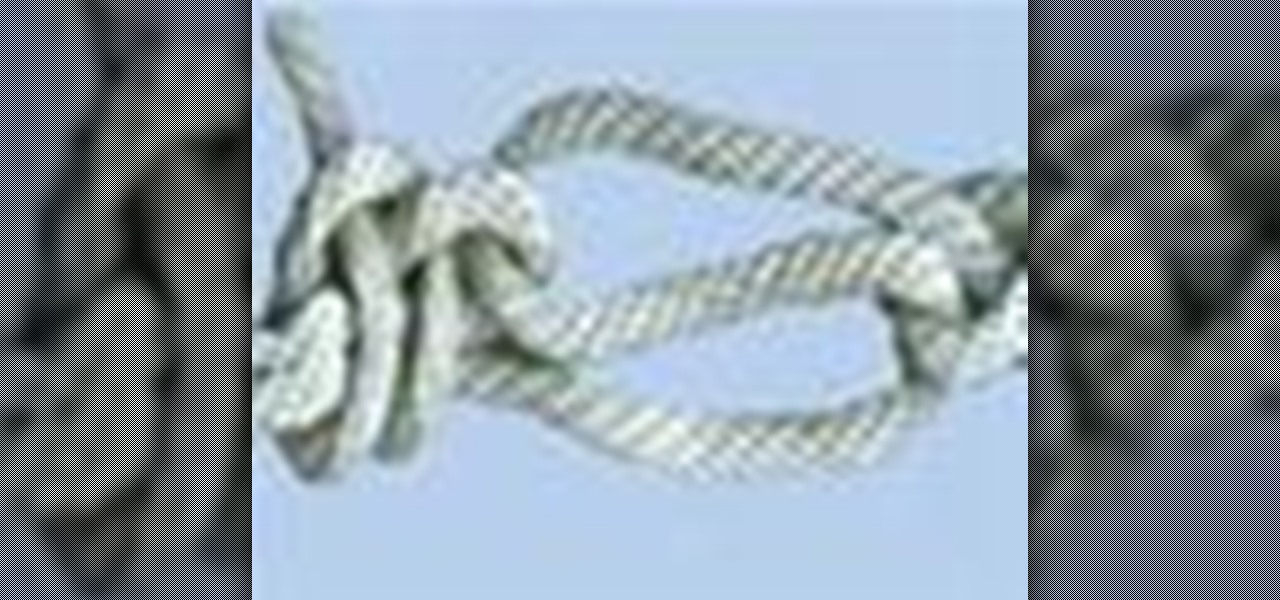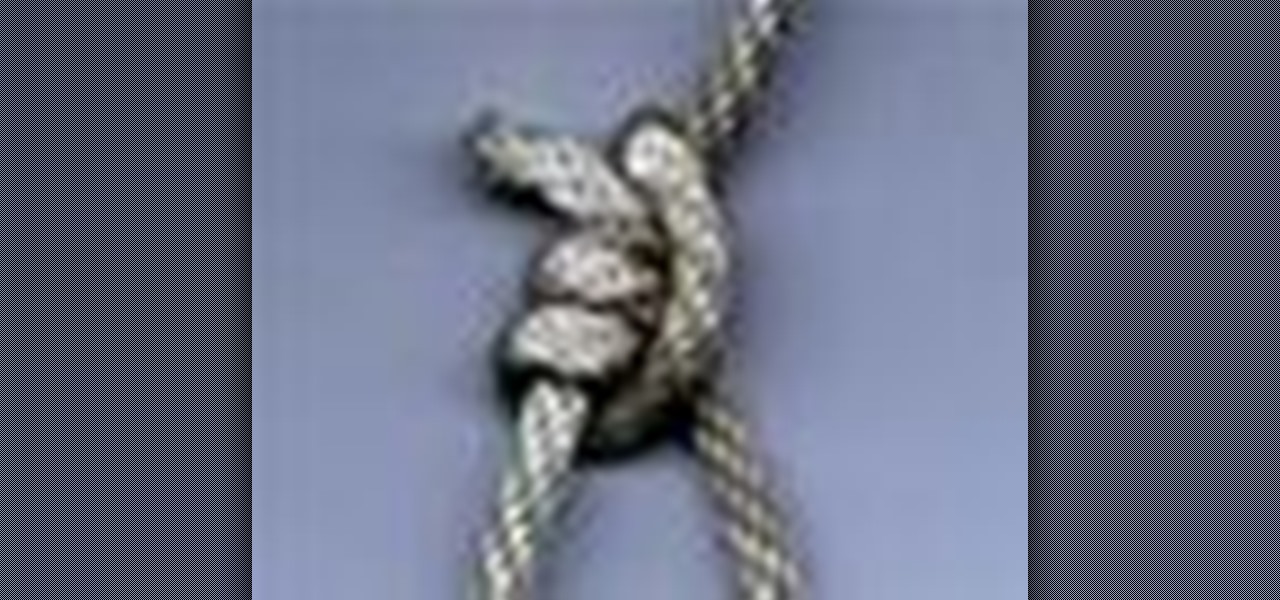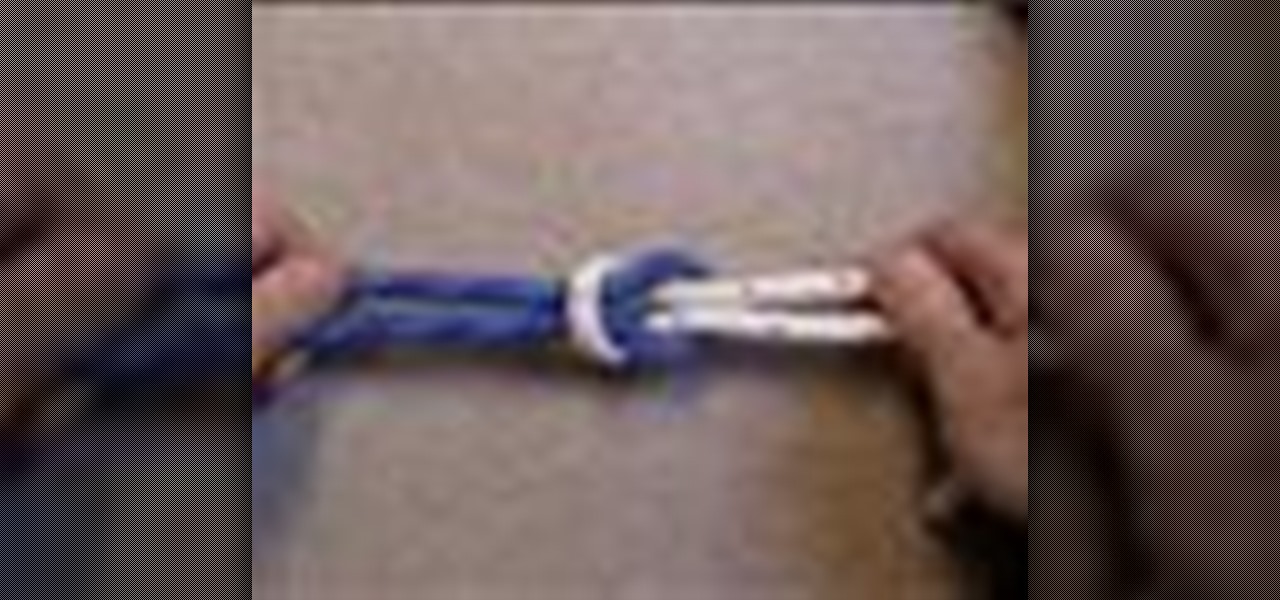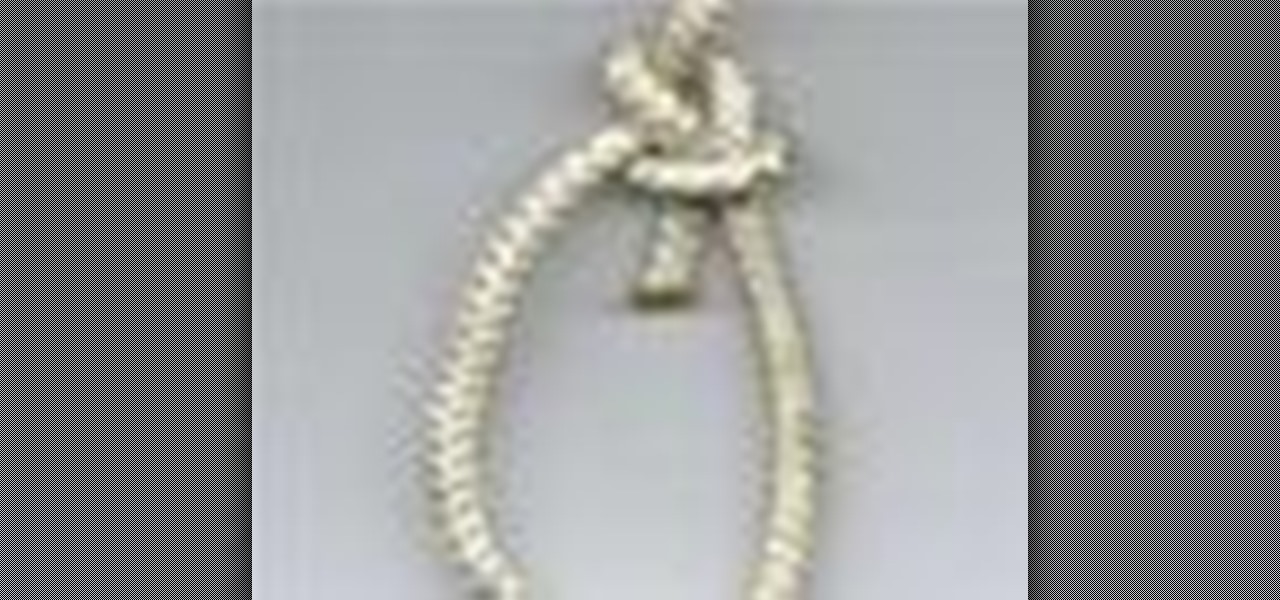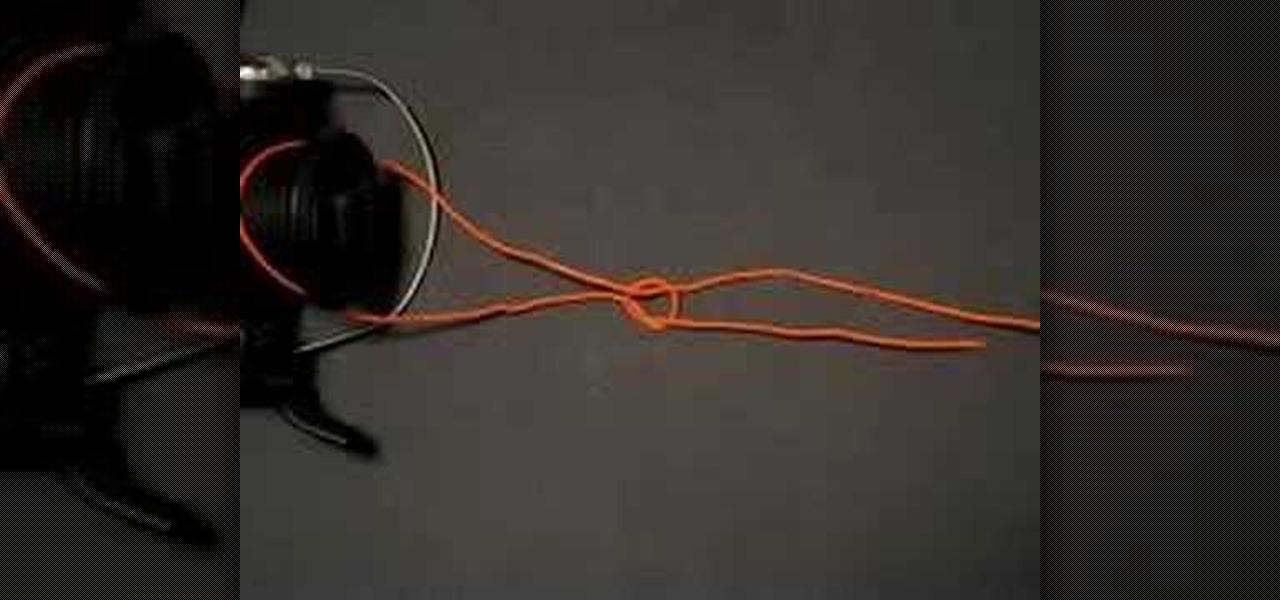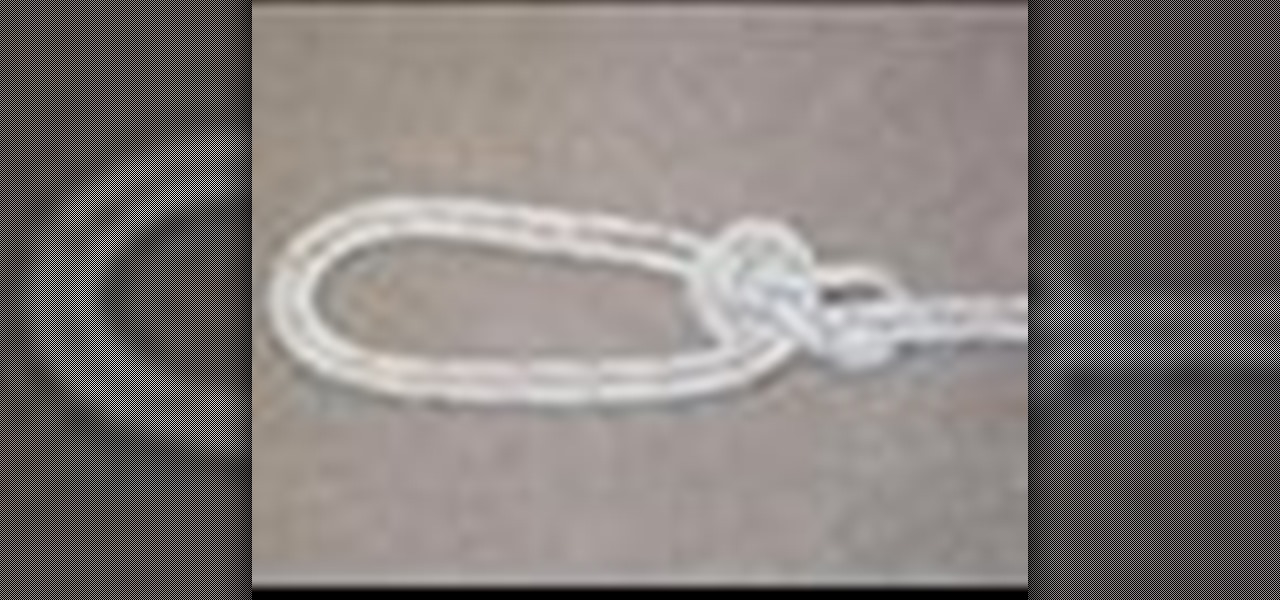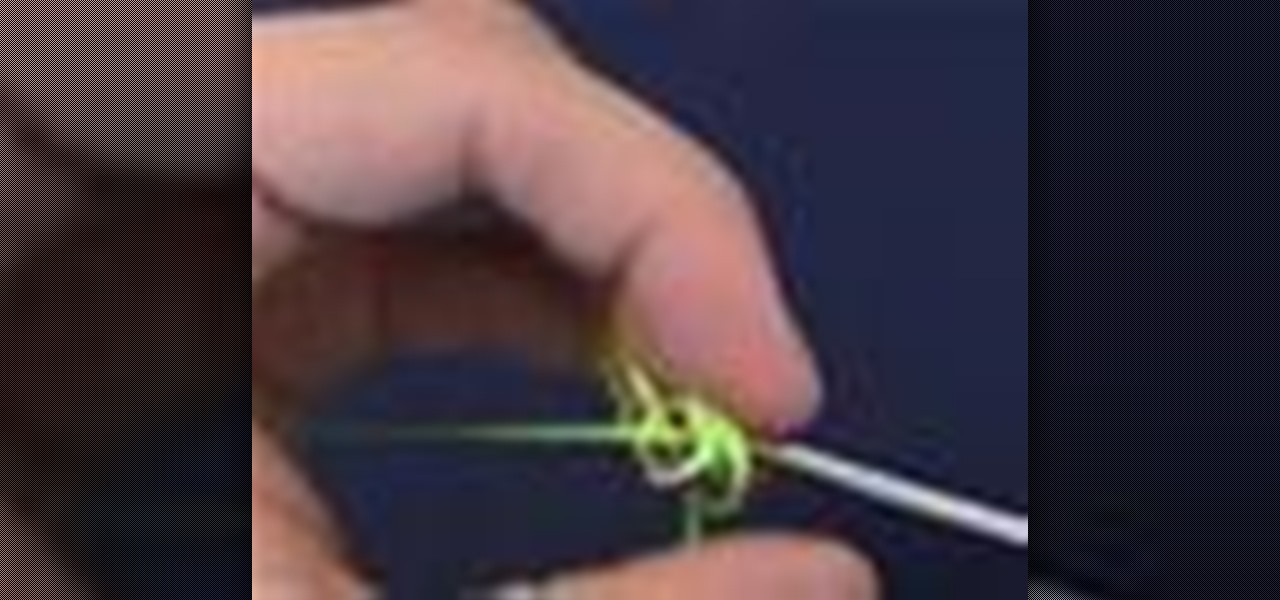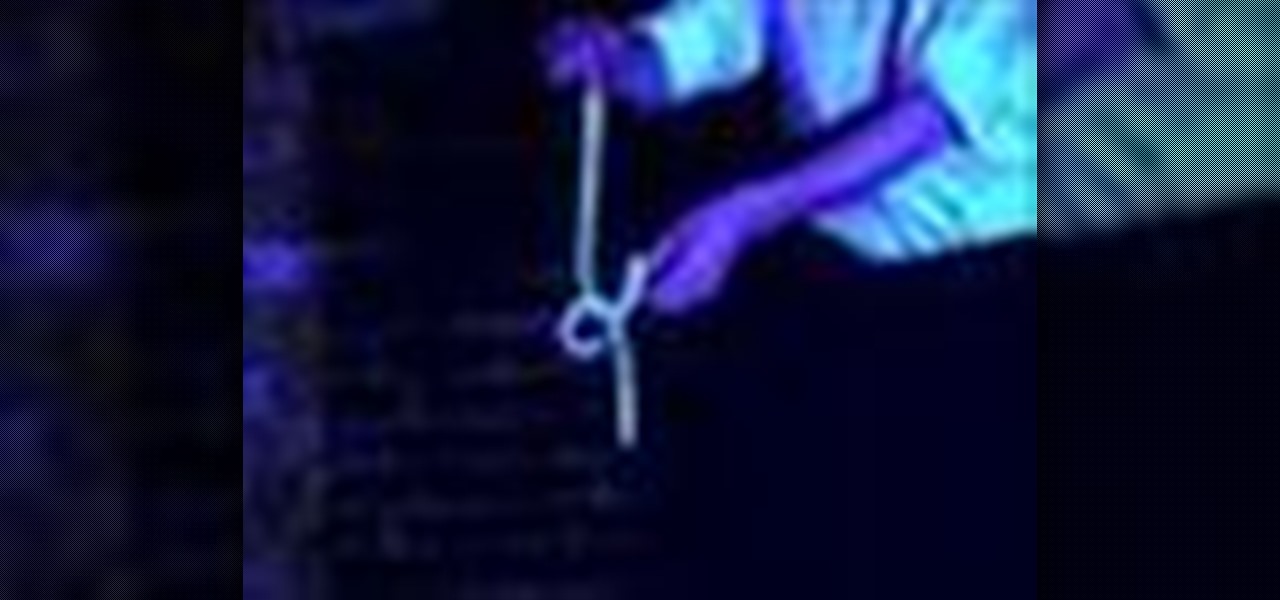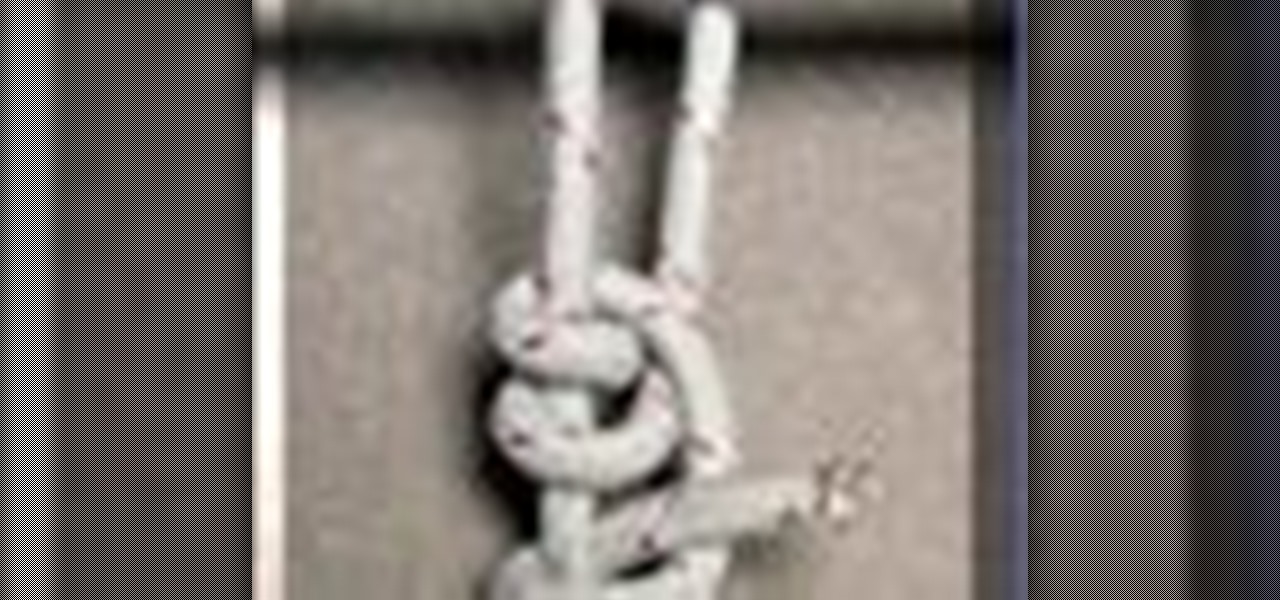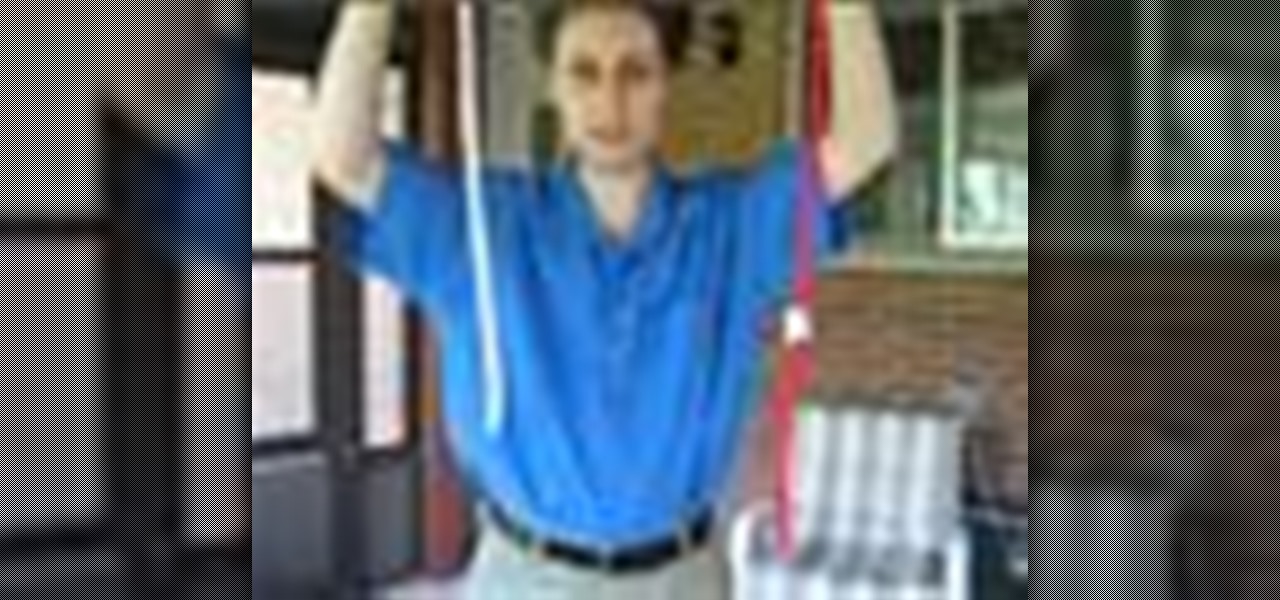
David J. Castle teaches you a magic trick in which you appear to make a knot jump from one strand of rope to another. You can use two different colored lengths of rope for a more impressive effect. Perform the Pakistan jumping knot rope trick.

How to tie a noose knot is demonstrated in this video.

The Clove Hitch Knot: Learn knot tying. Although not a very secure hitch, the Clove Hitch knot is quick to tie and easy to adjust - ideal for securing fenders and the like. Use this knot tying animation to learn how to tie the Clove Hitch knot. Tie the general Clove Hitch knot.

The Sailor's Short Splice Knot: Learn knot tying. Watch this knot tying animation to learn how to tie the Sailor's Short Splice knot. This knot is an ideal way of jointing ropes. Tie the Sailor's Short Splice knot.

The Clinched Blood Knot is a strong knot for tying a medium size hook to a medium size line. The clinched blood knot is very similar to the half blood knot but it differs in that the line it is passed through the eye of the hook twice. A good knot for tying the line to terminal tackle. Tie a Clinched Half blood Knot for fishing.

Looking for a new knot to try on your fishing trip? Take a look at this instructional video and learn how to tie the Grinner Knot. The Grinner Knot is a very strong knot that works with all line types also braided lines. The breaking strength is close to 100 percent. It is fairly easy to tie and is mostly used for attaching swivels of hooks to the line. The grinner knot can be used for lures too. All in all a great all around knot to have in the fishing knot arsenal. Tie a Grinner Knot on a f...

Sheet Bend Knot: Learn knot tying. Other titles for the sheet bend knot include, The Bend, Simple Bend, Ordinary Bend and Common Bend. The sheet bend knot is a quick way of jointing two ropes. The Double Sheet Bend on the right, is no stronger than the single, but is more secure. Tie the Sheet Bend Knot & Double Sheet Bend Knot.

The Anchor Hitch or Fishermans Bend Knot: Learn knot tying. The Anchor Hitch or Fishermans Bend knot is related to the round turn & and two half hitches, but is more secure. Typical use for this knot: attaching a rope to a ring, eg. on an anchor. Tie the Anchor Hitch or Fisherman's Bend knot.

Learn how to tie the Boy Scouts trucker's hitch knot. The Trucker's Hitch (Lorry Knot in the UK and parts of Canada) allows the scout (or sailor or whatever) to easily tighten a rope, yet easily untie the knot. Its most common use is for tying loads (thus the trucker moniker) such as a canoe to a cartop, a tarp to trailer or any application where a very tight rope is needed. It provides the advantages of a block and tackle, without the heavy hardware.

Learn how to tie this Boy Scouts knot. The tautline knot builds a loop that will easily get bigger - by sliding the knot up the rope toward the free end. But, when pressure is applied to the loop, it will not get smaller. Its most common use in Boy Scouts is on the ropes that attach a tent to tent stakes in the ground. The loose end is attached to the tent. The loop goes around the stake and the knot slides by hand to tighten or loosen the rope. But the tautline hitch knot will not slide by i...

This shows you how to tie an Alpine Butterfly Knot. The Alpine Butterfly Knot can be tie the same way as an alpine butterfly loop. But the alpine butterfly knot makes an end loop instead of a mid-line loop by trimming the end tag. A strong loop that is easy to tie. Tie the Alpine Butterfly fishing knot.

Learn how to tie the Sheep Shank Knot. For Navy League use. This complicated looking knot is the SHEEP SHANK. By forming this knot a line can be temporarily shortened and then quickly shook loose! NOTE: It's not as hard to tie as it looks! Tie the Sheep Shank Navy League knot.

The Sailor's Knot: learn knot tying. The Sailor's Knot is also called The Anchor Bend, Carrick Bend and Full Carrick Bend. It's easy to tie, does not slip easily in the wet, and is among the strongest of knots - it can't jam and is readily untied. Tie the Sailor's Knot.

Watch this knot tying animation to learn how to tie a sheet bend knot for your boy scouts requirements. Use a sheet bend to tie together two lengths of rope of dissimilar weights. The sheet bend knot will come in handy, so pay attention. Tie the sheet bend Boy Scouts knot.

The Thumb Knot is mostly used for attaching hooks, swivels and rings to heavy monofilament. At first it can be a bit tricky but when mastered it is a quick knot to tie. Follow along with this outdoor recreation HowTo video to learn to tie the fishing thumb knot. Tie a thumb knot for fishing.

The Perfection Loop is a great knot for tying a small loop at the end of the line. The Perfection Loop is perfectly in line with the standing part of the leader and it is both quick and easy to tie. Watch this video knot tying tutorial and learn how to tie a perfection loop fishing knot. Tie a perfection loop fishing knot.

Check out this instructional boating video that demonstrates how to tie the heaving line knot for boating. Animations are the best way to learn to tie a knot. Just follow the simple steps outlined in this instructional fishing video and learn how to tie a heaving line knot. Start reeling in the big fish! Tie the heaving line knot for boating.

Check out this instructional boating video that demonstrates how to tie the running bowline knot for boating. Animations are the best way to learn to tie a knot. Just follow the simple steps outlined in this instructional fishing video and learn how to tie a running bowline knot. Start reeling in the big fish! Tie the running bowline knot for boating.

A square knot is used to tie two lines (ropes) together that are of a similar size. The two ends of the line which carry the load are on the same side. This knot is also called a reef knot. Tie a square knot with two ropes.

Here's some video instructions on how to tie a Figure Of Eight Loop. The Figure Of Eight Loop is a quick and easy loop knot that forms an end loop. If the figure of eight loop is tied midline it is called a blood bight knot but the correct name when tied as an end loop is figure of eight loop. It will retain around 70 percent of the lines breaking strength and can be used to attach hooks, sinkers or droppers. Watch this video knot tying tutorial and learn how to tie a figure of eight loop kno...

Here's some video instructions on how to tie a Double Figure Of Eight. The Double Figure Of Eight is a quick and easy loop knot that forms an end loop. If the double figure of eight is tied midline it is called a blood bight knot but when tied as an end loop the name is double figure of eight. It will retain around 70 percent of the lines breaking strength and can be used to attach hooks, sinkers or droppers. Watch this video knot tying tutorial and learn how to tie a double figure of eight k...

The Double Loop Bowline: learn knot tying. Here's another way to tie a bowline in a doubled rope. The Double Loop Bowline knot was generally used at sea for lowering an injured man from aloft, by putting one leg is put through each loop. Use this knot tying animation to learn how to tie the Double Loop Bowline knot. Tie the Double Loop Bowline knot.

Learn how to tie the Boy Scouts knot the bowline. The bowline knot is used to make a non-slip loop in the end of a rope. While it is used for climbing and rescues, a Figure-8 Loop Knot often is best in those situations. Remember to end the knot with the tag end of the rope inside the loop. And thanks to those scouters and boaters who helped remind me of this point. Tie the bowline Boy Scouts knot.

Fishing knots are not rocket science, anyone can do it. Each knot has a specific application and every fisherman should know a few. This outdoor recreation how-to video tutorial shows you how to tie the arbor knot. The arbor knot is a knot to tie your fishing line to your reel. Use it for fly, spinning, or even a casting reel. Tie the common arbor fishing knot.

Learn how to tie the Bowline Knot. For Navy League use. One of the handier knots in sailing, the bowline (shown above) forms an eye or loop in the end of a line. In sailing the bowline knot connects the JIB SHEETS (lines/ropes) to the JIB (foresail). Tie the Bowline Navy League knot.

The End Loop is a loop knot for tying a loop in monofilament. The end loop is simple an quick to tie and very strong. These benefits makes the end loop a great choice for many situations. Watch this video fishing tutorial and learn how to tie an end loop knot. Tie an end loop fishing knot.

This knot is used to make a pair of fixed loops in the middle or at the end of a line. This is a strong knot and can be used in overboard rescue, as a towing bridle and in a pinch, even to make a boatswain's chair to be used to ascend the mast. Tie a bowline on a bite knot.

Here's some video instructions on how to tie a Plaited double. The Plaited Double knot is very strong loop splice. It retains around 95 percent of the lines breaking strength so it is well worth to learn this knot. The only down side is that it is a little complicated but when mastered it is easier than the bimini twist and just as strong. Watch this video knot tying tutorial and learn how to tie a plaited double for fishing. Tie a plaited double knot for fishing.

The Rebeck Knot is simple and secure hook connection. It works with most lines even braided lines if you ad a least five extra wraps. The rebeck knot will retain approximately 65 to 70 percent of the lines original breaking strength. Follow along with this outdoor recreation HowTo video tutorial to learn how to tie the rebeck knot for fishing. Tie the rebeck knot for fishing.

The Dropper loop is a classic loop knot which is often used on multi-hook fishing lines and bait rigs. The dropper loop is also often used by fly fishermen to attach an extra fly to the leader. The dropper loop can be created in the middle of a the fishing line and forms a loop which is off to the side of the line. Watch this video knot-tying tutorial and learn how to tie a dropper loop fishing knot. Tie a dropper loop fishing knot.

Learn how to tie the sheep shank Boy Scouts knot. A sheep shank knot has two uses. First, you may use it to shorten a rope and maintain its strength for pulling. Its most useful purpose, however, is in situation when you cannot retrieve your rope. When lowering yourself over a rock (with no intention of returning up the face) how are you going to retrieve the rope that it tied to a rock or tree at the top? Tie a sheep shank knot close to the top end of the rope. Maintain tension on the rope a...

The Sailor's Eye Splice: Learn knot tying.

The Duncan's Loop form a loop at the end of the line. Unlike many other loop knots the Duncan's loop can easily be adjusted to the desired size before it is pulled tight. It is often used by fly fishermen to attach a fly to the leader but can be used in other applications as well. This compact knot is easy to tie and will retain around 85 percent of the lines original breaking strength. Watch this video fishing tutorial and learn how to tie a Duncan's loop knot. Tie a Duncan's loop fishing knot.

Sam Veale shows you how to tie a knot in a rope using only one hand and his Brylcreem powers Tie a knot with one hand.

A bowline knot can be used to secure a line to a person overboard. Tie a bowline waist knot.

A Fisherman's Bend is used to attach a line to a pole. It is sometimes called an anchor knot because it is also used to secure the rode to an anchor. Tie an anchor bend or fisherman's bend knot.

A taut line hitch knot is used in sailing to attach a line to a pole. Tie a taut line hitch knot to attach a line to a pole.

A carrick bend is also called a "sailor's knot" and can be used for tying two heavy lines ( i.e. towing hawsers and cables ) together. Tie a carrick bend knot.

Learn how to add style to your cocktail. Watch and learn how to make a lemon knot drink garnish. We think the classic "twist" has a better look, but it's always nice to do something different... Make a lemon knot.

Think this trick is impossible? Well think again, as magician Ryan Oakes teaches the secret to Knot Impossible! You will need a length of clothesline rope about 2-3 feet long. Sometimes we use materials that require adult supervision... like scissors so make sure you have friends and family around whenever you do magic tricks. 1. Hold the rope in your right hand, between your thumb and pinky. It should lay across your palm and the ends should extend to the back of your hand.










